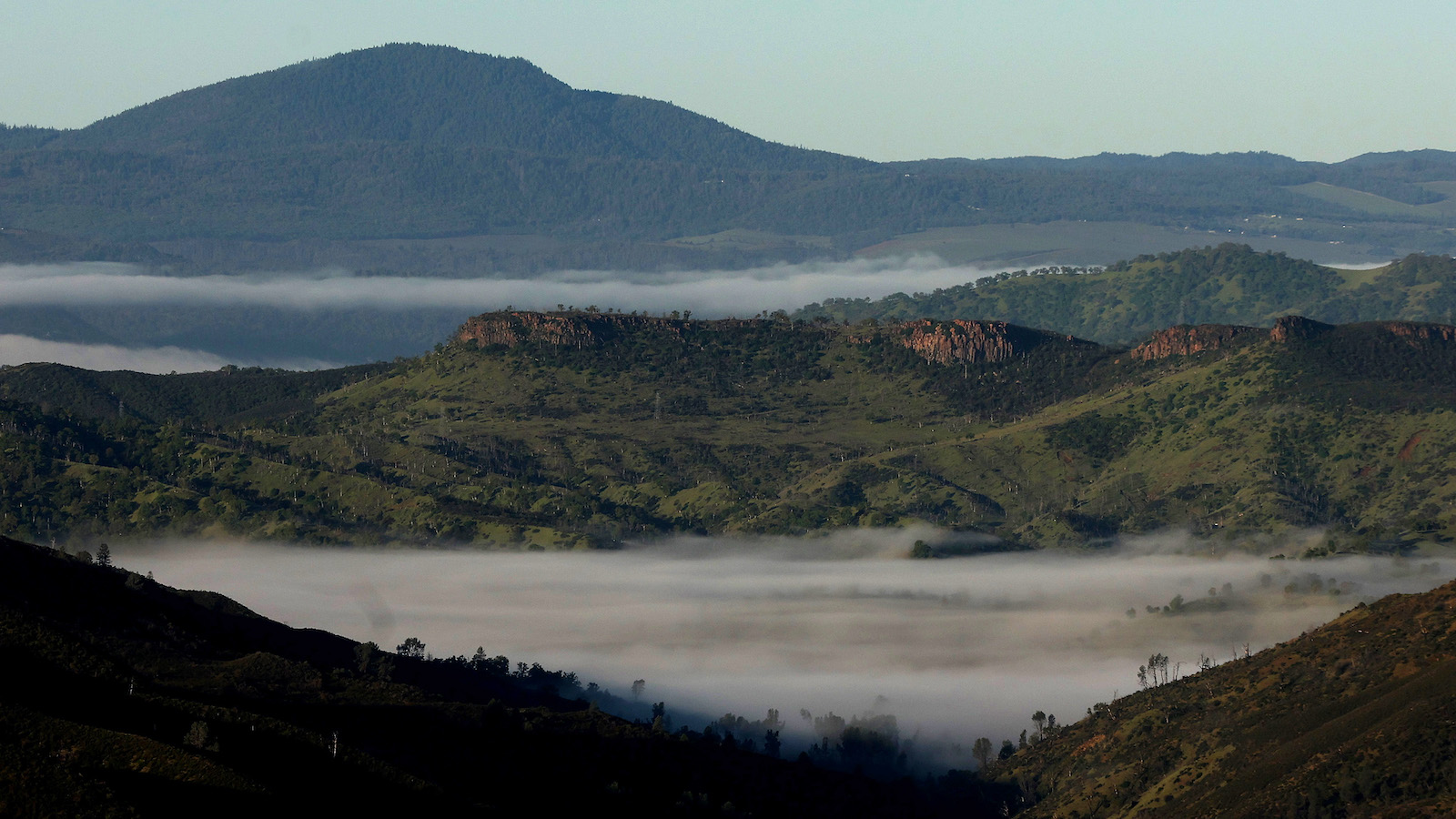
For a decade, wind farm companies have eyed Molok Luyuk — a mountain ridge of religious importance to Northern California tribes, whose people have worked for years to protect it. It is also widely biodiverse with moose, mountain lions and black bears, as well 40 rare plants like the pink adobe lily.
Mia Durham is the secretary of the Yocha Dehe Wintun nation, a tribe that has been in a relationship with Molok Luyuk for thousands of years. In response to petitions filed by wind energy companies seeking to develop the area, the tribe and its allies asked President Biden to protect it in 2019.
“That’s what stepped it up for us and put us on track to move forward as quickly as possible,” Durham said. “We wanted to protect sacred places that are there. They would be badly affected.”
One way to protect landscapes and waterways like Molok Luyuk is to have them declared national monuments, a term used to indicate that a portion of the land is federally protected from development and damage. While Congress designates national parks, only a president can designate a national monument.
That’s what happened earlier this month when the Biden administration expanded a national monument to include Molok Luyuk, which joins the ridge at nearby Berryessa Snow Mountain National Monument, a nearly 350,000-acre coastal range in Northern California. Tribes are now working on a co-stewardship agreement for the Molok Luyuk area, but not for the entire national monument.
But the tribes that have a relationship with Molok Luyuk are not done with their advocacy. They have protected the area from energy development, but they still have little say in how the land is managed. While the federal government has floated co-stewardship agreements over the years, national monuments are still considered property of the federal government.
Now that Berryessa includes Molok Luyuk, the US Forest Service and the Bureau of Land Management are in discussions to enter into a co-stewardship agreement with the Yocha Dehe Wintun Nation, Kletsel DeHe Wintun Nation, and the Cachil DeHe Band of Wintun Indians of the Colusa Rancheria . The details are still being ironed out, but the Yocha Dehe Wintun Nation is excited to bring traditional knowledge to the management of Molok Luyuk.
Melissa Hovey is the manager at Berryessa Snow Mountain National Monument, and she said co-management takes place between the Bureau of Land Management and the US Forest Service. These federal agencies can enter into co-stewardship agreements with tribes, but they cannot delegate management without congressional approval.
“Co-management means decision-making authority,” she said. “Co-stewardship means that one entity still has the decision-making authority.”
You would think that “co-stewardship” and “co-management” would be simple terms to define, but there are numerous federal documents that have used the two terms interchangeably over the years. Co-stewardship is a broad term that describes agreements made between federal agencies and tribal lands to express shared interests in the management of federal lands. Co-management refers to a stronger tribal presence and decision-making power.
The Biden administration has pushed co-stewardship as a model for how federal agencies can build relationships with Indigenous nations. Tribes have been forcibly removed from much of their ancestral homeland in the US, and so many are deprived of medicine, food, and ceremonial sites now under federal management.
In 2015, the Berryessa Snow Mountain National Monument was created under President Obama using the Antiquities Act—a 1906 law that allows the president to protect places of historic and scientific interest on federal land and make them national monuments. Berryessa is protected because of the area’s biodiversity: 80 different species of butterflies, black bears, California salamanders and birds of prey. Molok Luyuk translated from Patwin into English as “Condor Ridge,” referring to the endangered California condor that used to fly along the ridge.
Congressional action is not the only way to obtain co-management powers. The Bears Ears Inter-Tribal Coalition in Utah has one of the most successful stories of tribes gaining co-governance status – they were given “true co-management” by a Intergovernmental Cooperation Agreement. In 2022, the federal government agreed to co-manage Bears Ears National Monument with the Hopi Tribe, Navajo Nation, Ute Mountain Ute Tribe, Ute Indian Tribe of the Uintah and Ouray Reservation, and the Pueblo of Zuni. For the first time ever, tribal lands worked with federal agencies to draft a resource management plan that would determine how a national monument should be managed.

Patrick Gonzales-Rogers is a professor at the Yale School of Environment where he specializes in tribal sovereignty and natural resources. He is also the former director of the Bears Ears Inter-Tribal Coalition.
Co-management allows tribes to exercise sovereignty, according to Gonzales-Rogers. “It allows them to be more assertive,” he added. And when that happens, tribes can bring in religious and spiritual practices to use traditional knowledge, wisdom that has been minimized by federal agencies in the past.
Gonzales-Rogers is hopeful that these choices will worsen exponentially, “and may even have a connection to say something like ridge” a reference to a movement rooted not only in a mass restitution of land to indigenous nations and peoples, but also tribes having sovereignty to steward the land taken from them.
Gonzales-Rogers believes the two terms have not been very well defined over the years, but said co-stewardship agreements can be a good way to start building co-management.
And the more tribes have autonomy over their ancestral lands, the better for conservation purposes. According to a recent study, equal partnerships between tribes and governments are the best way to protect public lands — the more tribal autonomy, the better the land is cared for.
Mia Durham with the Yocha Dehe Wintun Nation is excited to begin drafting its own co-stewardship agreement over Molok Luyuk.
“I hope it doesn’t take long because we’ve managed all these countries, so it shouldn’t be difficult to put it on a piece of paper,” she said.






